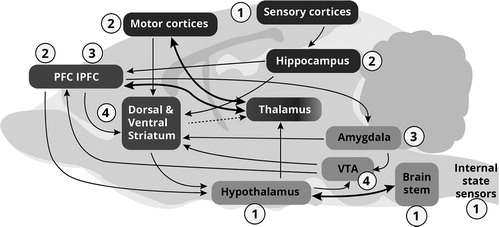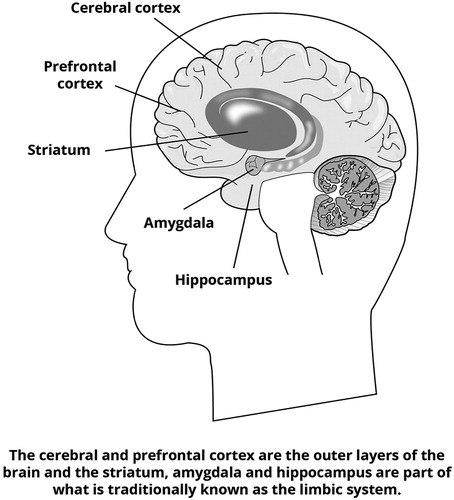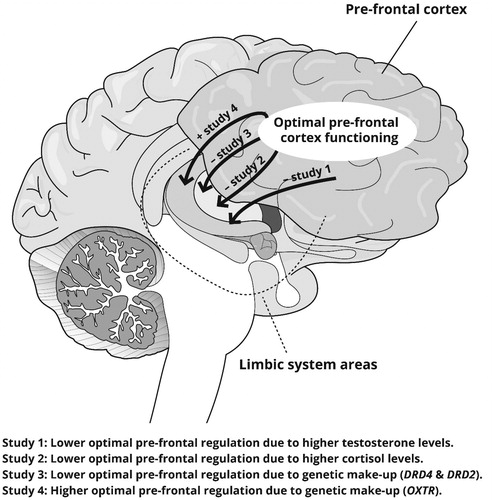Figures & data
Table 1. List of terms.
Figure 1. A neuroscientific presentation of goal orientation (adapted from Verschure, Pennartz, and Pezzulo Citation2014). Note: was not built on reverse inference but conceives brain regions via their co-activations as connected to one another, giving rise to emergent goal-oriented behaviors in both humans and other vertebrates. Also note that this brain depicted in is not a human brain but one that is most similar to that of all other vertebrates, such as rats, whose prefrontal cortex is smaller compared to that of humans. © 2014. Paul F.M.J. Verschure, Cyriel M.A. Pennartz, and Giovanni Pezzulo. All Rights Reserved. Reproduced with permission.

Figure 3. The cultural drive hypothesis according to Laland (adapted from Laland Citation2018b).




